“Freezing” or “hanging up” on the clicker are two names for the same problem; an inability to execute the shot properly. Andrew Smith looks at the causes and cures
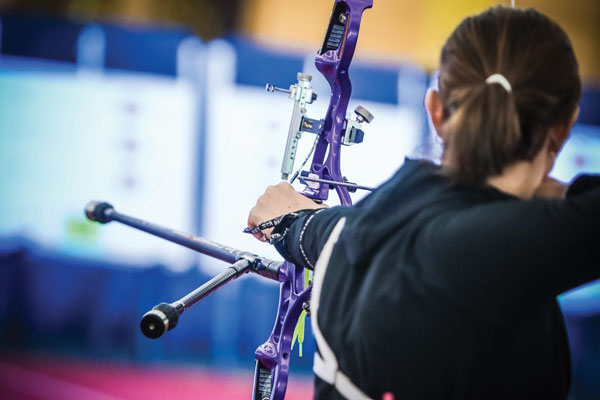
This can be a difficult issue to fix on paper, but many archers find themselves in the position where they just cannot move the arrow that final millimetre. This might not be on every shot, but odd arrows at certain times during a round or head-to-head. The use of the clicker is fully integrated in to the shot execution, so looking at it in isolation here will give you things to think about, but ultimately putting it into practice will require a re-evaluation of your form or mental attitude. So here are a few pointers as to why it might happen.
There is no doubt that the correct use of the clicker will improve your scores, and this is the reason every top international archer uses one. But many club archers seem to experience problems with one, and even experienced shooters can often fall into an awkward ‘freeze’ on their clicker on occasion.
Using a clicker is simple: you load the arrow, position it under the blade, draw the string back until the arrow has come right through the clicker, it goes “click”, then you immediately let go of the string, remembering to continue with the follow through and finishing a strong shot.
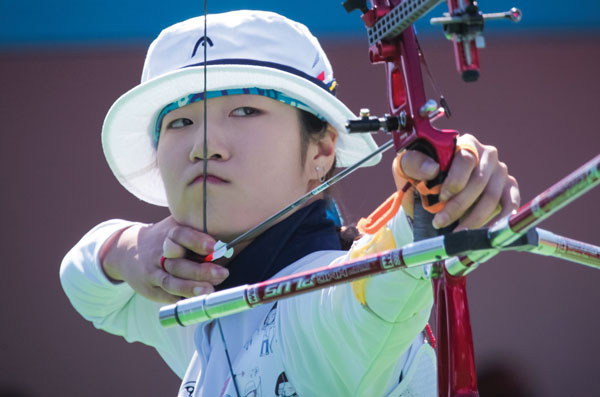
“Hanging up” on the shot is a way of referring to a situation where archers struggle to pull through the clicker
The clicker is an audible device to tell you when to release the arrow. In its simplest form, it is just a draw check device to make sure you are drawing the arrow back the same distance each shot, the logic being that the arrow receives the same energy from the bow each time and in theory should travel the same distance. The reality is that the whole shot execution has more influence on accuracy and distance. Personally, I look upon the clicker as confirmation that I am shooting to my current ability, and if I cannot get through the clicker, or if I come through too easily, then something is not right with my form. The device becomes an additional trigger to come down and start the shot sequence again.
Being relaxed, with a strong commitment to the shot, standing tall, keeping in line and drawing the string back by engaging the back muscles is the key to good clicker execution – though that does not mean that you absolutely have to be shooting perfectly to use one, as good clicker execution can be taught to beginners. The key is to concentrate on the follow through, and the more you practice the more accomplished you will be.
Why do we freeze?
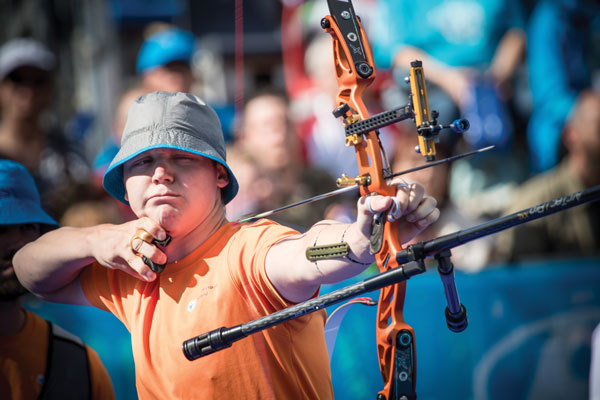
Your shot doesn’t stop at the click – though it’s easy for your brain to ‘switch off’ there and lose focus on the execution
If on the practice ground your shot execution is smooth and effortless, what is going through your mind during the shot is probably the biggest issue when it comes to freezing. It can be further narrowed down to a subconscious fear of failure, pre-shot thoughts about what might be, and what your peers are going to say if you do not achieve it. Fatigue aside, when we are at a crucial time in a competition, say, chasing a medal, achievement badge or on for a PB, we instinctively know what the arrow or end needs to score. Without realising it, as we step on the line and panic sets in, our conscious mind wants to act like a comfort blanket and take over the shot sequence. As a result, we tighten up and the bow becomes hard to shoot. Everything we do effortlessly day to day goes out of the window and we start to shoot like a beginner.
Fear of failure and commitment to the shot
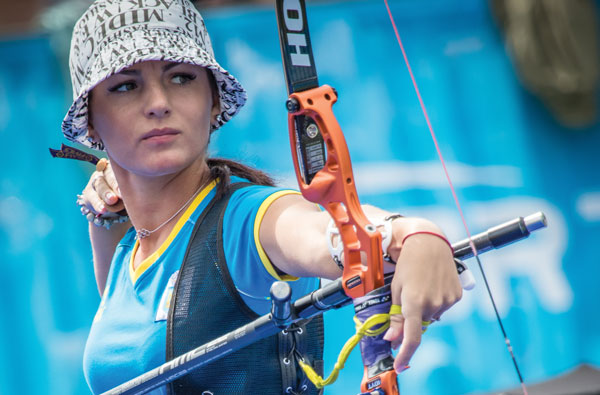
A strong, clean follow through is a good sign that the clicker has been incorporated into the shot correctly
The key here is that the conscious mind rather than the sub-conscious mind has taken over; we become fully aware of our shot sequence and start analysing every stage for affirmation that what we are doing is correct. As we try harder to get the feel of the shot, more care is taken when aiming, probably to the extent of over-aiming. As somebody put it to me: “Through my training and the many arrows shot each day, my subconscious can effortlessly shoot 1,000s of 10s, so why, when it matters, do I let my conscious mind take over at a critical point in a competition when I can count on one hand the great 10s shot this way?”
So, what can we do about it? Your conscious mind will always want to take over, and to stop this we need to distract it – so, give your conscious mind something to do to stop it interfering with the whole shot. This must be just one task, and it doesn’t matter what it is, popular choices are concentrating on the movement of the drawing elbow, standing tall or even having a song rattling around in your brain. This leaves the subconscious brain to get on with the normal rhythm of the shot, which has been practiced and improved over the years.
Finish the shot
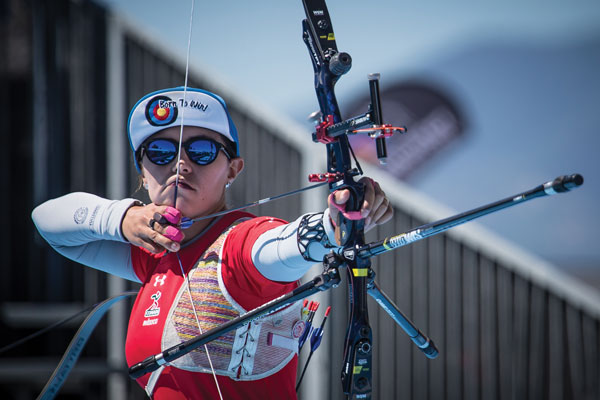
Elevation for long distances, small target faces,and pressure situations are all things that can contribute to hang-ups or freezes
Shooting good arrows is all about getting into a shooting rhythm. Have you noticed that when you are shooting well everything is effortless? Freezing can also be a result of finishing the shot at the “click”, rather than with the follow through. The click is towards the end of the shot sequence, but it is not the finish, so forget about the “click” and concentrate on making sure you get the follow through right. This means keeping back tension through the shot. As soon as you lose back tension and the string stops being pulled backwards the rhythm of the shot stalls, and it’s hard to get it moving again. A common reason for stalling is forgetting to keep the tension and backwards movement during the aiming phase, as the transfer of attention to checking the position of your sight pin can take over the whole shot sequence and the shot cycle collapses.
Distances
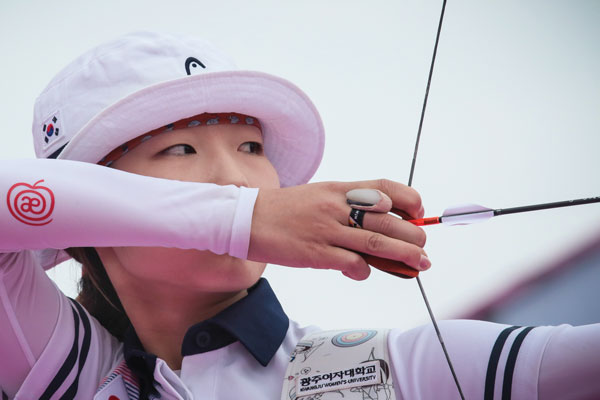
Make sure your front hand isn’t tightening up as you fatigue, as this can lead to execution errors
Interestingly, some archers only have freezing issues at certain distances – usually the longer ones. This can be attributed to raising the drawing arm to get the sight elevation rather than maintaining good line and bending at the waist, which creates two form issues. Firstly, it puts everything out of line and a different pressure on your fingers, and secondly, it shortens your draw length, making it harder to pull through the clicker.
Tiredness
When we get tired it’s easy for our form to go out of the window. Hips can start to drift towards the target, the bow shoulder can lift up, or we can forget to shoot using our back muscles. Any one, or all, of these issues will make it harder to pull the arrow through the clicker.
Another problem you might encounter could be in your front hand. You often might not realise it, but sometimes archers can find that extra mm to make the “click” by squeezing the fingers of their tab hand closed. This isn’t ideal as it tends to result in a weak, inconsistent release, and as we get tired that function stops operating.
So, to conclude, your clicker use, shot cycle and shooting form are all interlinked – they cannot function correctly in isolation. Freezing through the clicker stage of the shot cycle is quite common and it can strike at any time during a round or competition – and at any time during your archery career. Understanding why and how it might happen can allow you to work out a quick solution to shoot that next arrow. The key is to realise that freezing is a symptom of a breakdown in your shot sequence and a positive commitment to the shot.
This article originally appeared in the issue 119 of Bow International magazine. For more great content like this, subscribe today at our secure online storewww.myfavouritemagazines.co.uk

